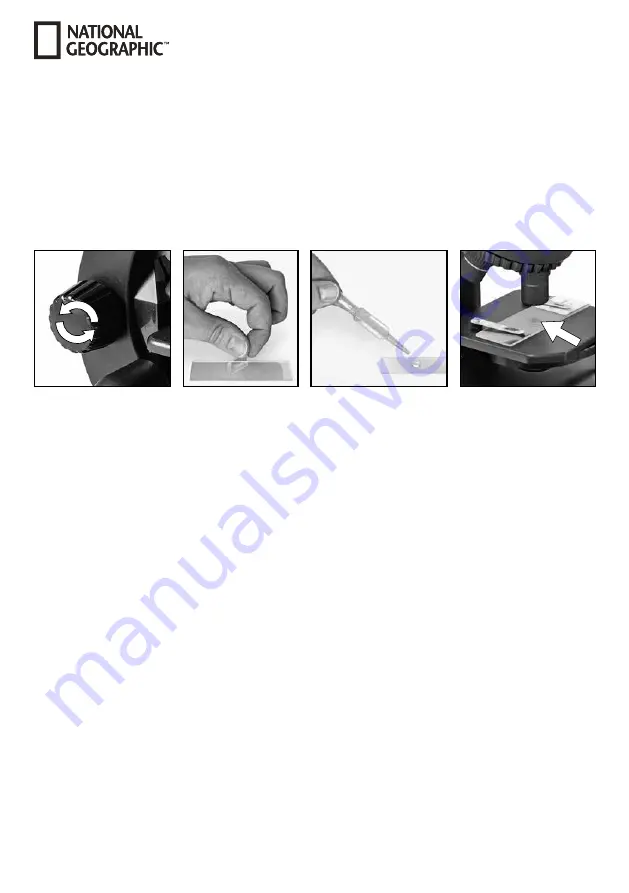
18
The lower lens (objective) produces a magnified image of the prepared specimen (10). The picture, which
you can’t see, is magnified once more by the second lens (eyepiece, 1), which you can see as the 'micro-
scope picture'.
2. Assembly and location
Before you start, choose an ideal location for using your microscope. It’s important that you choose a
spot with enough light for normal observation. Furthermore, it is recommended that you place the micro-
scope on a stable surface, because a shaky surface will not lead to satisfactory results.
3. Normal observation
For normal observation, place the microscope in a bright location (near a window or desk lamp, for example).
Turn the focus knob (2) to the upper stop, and set the objective turret (3) to the lowest magnification.
Now, turn on the light using the switch on the microscope base. You’ll find further tips about the light
source in the next section. Now, place a prepared slide (10) under the clips on the stage (4), directly under
the objective (1). When you take a look through the eyepiece, you can see the magnified specimen. At this
point, you still might see a slightly fuzzy picture. Adjust the image sharpness by slowly turning the focus
knob (2). You can now select a higher magnification by turning the objective turret and selecting a different
objective.
When you do so, note that the sharpness of the picture must be adjusted again for the higher magnifica-
tion. Also, the higher the magnification, the more light you will need for good illumination of the picture.
The wheel with pinhole apertures (13) below the microscope stage (4) will help you in viewing very bright
or clear-sighted preparations. Turn the wheel (13) till the best contrast is achieved.


































